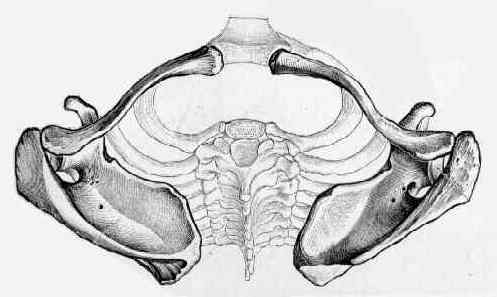- Clinical Findings:
- patients may note pain with activities that occur in adduction (golf back swing);
- local tenderness to palpation and to hyper-adduction;
- trapezial spasm;
- patients will often note pain located posterior to the AC joint;
- steroid-lidocaine injection:
- remember that AC joint injections are often a difficult "stick" and are often painful;
- if dx is in question, consider a subacromial lidocaine-steroid injection;
 - if the patient does not receive relief from the subacromial injection, then AC joint arthrosis is a more likely diagnosis;
- if the patient does not receive relief from the subacromial injection, then AC joint arthrosis is a more likely diagnosis;
- references:
- Diagnostic value of physical tests for isolated chronic acromioclavicular lesions
- Diagnostic values of tests for acromioclavicular joint pain.
- Therapeutic efficacy of corticosteroid injections in the acromioclavicular joint.
- The active compression test: a new and effective test for diagnosing labral tears and acromioclavicular joint abnormality.
- Intra-Articular Versus Periarticular Acromioclavicular Joint Injection: A Multicenter, Prospective, Randomized, Controlled Trial
- cautions:
- be sure to consider a slap tear or biceps tendonitis in the differential diagnosis;
- reference: The SLAP lesion: A cause of failure after distal clavicle resection
- Radiographs: (Zanca view):
- AC joint subluxation;
- narrowing of the joint space w/ sclerosis of distal end of the clavicle;
- inferior osteophytes;
- in some cases distal clavicular resorption may be present, which might indicate RA, scleroderma, or which may occur in weight lifters);
- MRI:
- reactive bone edema on MRI is most reliable predictor of symptomatic AC pathology than degenerative changes seen on MRI
- other findings include caudal osteophytes, capsular hypertrophy, and subchondral cysts;
- in the study by Stein et al, the authors sought to detection of AC joint pathology in asymptomatic shoulders with magnetic resonance imaging;
- ACJ arthritic changes were graded on a scale from 1 to 4 (none, mild, moderate, and severe), based on the amount of subacromial fat effacement,
joint space narrowing, irregularity, capsular distension, and osteophyte formation;
- 41 (82%) of 50 shoulders had abnormalities consistent with arthritis on MRI;
- references:
- A comparison of magnetic resonance imaging findings of the acromioclavicular joint in symptomatic versus asymptomatic patients.
- Atraumatic osteolysis of the distal clavicle: MR findings
- Detection of acromioclavicular joint pathology in asymptomatic shoulders with magnetic resonance imaging.
- A comparison of magnetic resonance imaging findings of the acromioclavicular joint in symptomatic versus asymptomatic patients.
- Increased T2 signal intensity in the distal clavicle: incidence and clinical implications.
- MRI features of the acromioclavicular joint that predict pain relief from intraarticular injection.
- The MRI geyser sign: acromioclavicular joint cysts in the setting of a chronic rotator cuff tear
- Indications For Excision:
- pts w/ incomplete AC separation (type I & II) who develop degenerative changes & persistant symptoms may require excision of distal clavicle;
- references:
- The influence of distal clavicle resection and rotator cuff repair on the effectiveness of anterior acromioplasty.
- The management of acromioclavicular joint osteoarthrosis: débride, resect, or leave it alone.
- Contra-indications:
- it is inappropriate to excise the distal clavicle in chronic type III, IV, V or VI AC separations;
- this may increase the patients symptoms, by converting a displaced long clavicle, into a short displaced clavicle;
- references:
- Arthroscopic resection of the distal clavicle with a superior approach
- Sequential Resection of the Distal Clavicle and Its Effects on Horizontal Acromioclavicular Joint Translation

